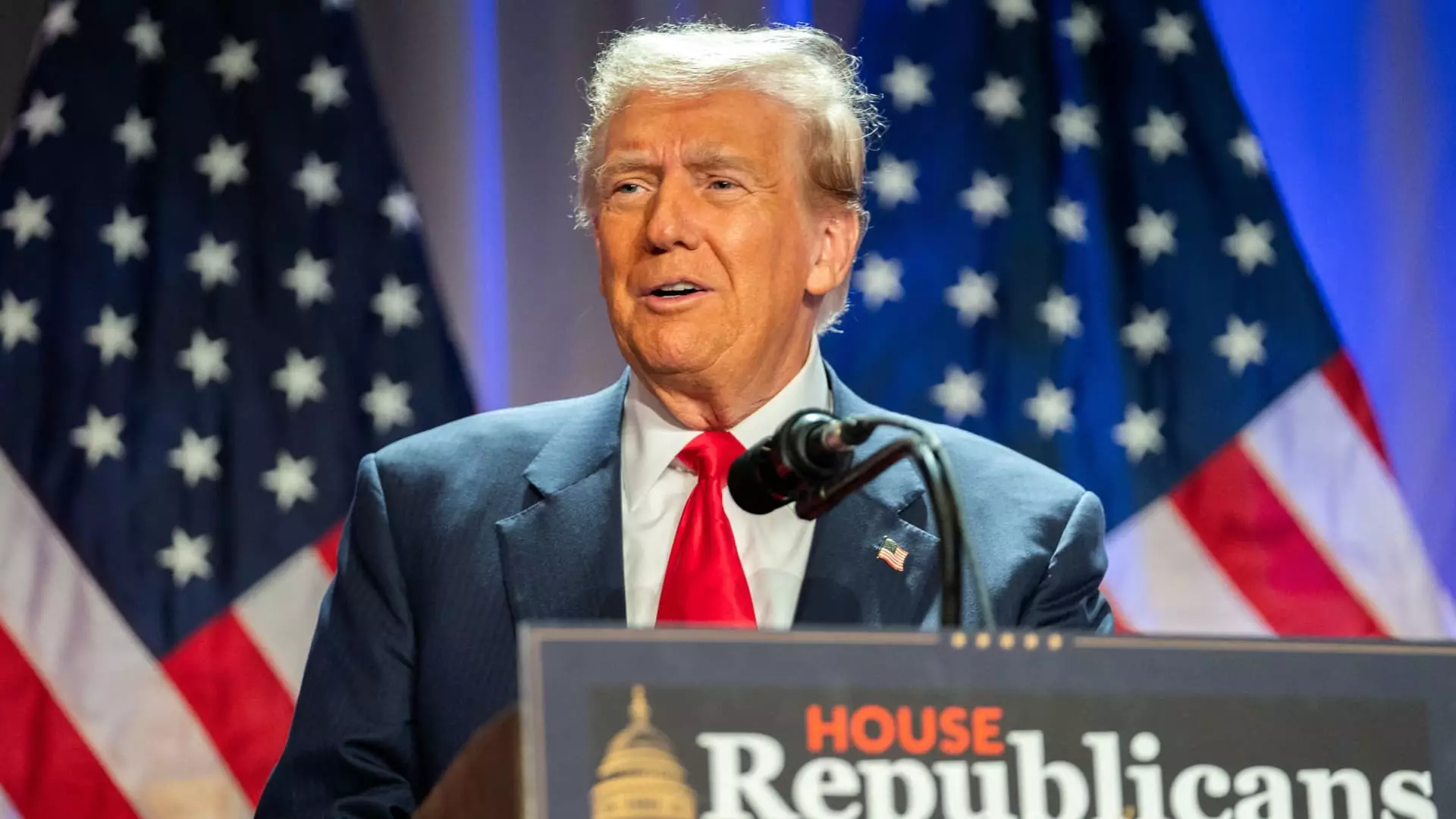The upcoming debate in Congress surrounding expiring tax breaks and the fiscal proposals championed by President-elect Donald Trump presents a landscape fraught with both opportunity and challenge. As lawmakers gear up to engage with the intricacies of tax legislation, the real test lies not merely in their abilities to pass laws, but in their ability to reconcile competing interests, balance their party’s agenda, and address the pressing issues highlighted by current economic realities.
Republicans hold a strategic advantage with a majority in both the House of Representatives and Senate, granting them the means to initiate sweeping tax reforms through a process known as budget reconciliation. This method allows them to bypass the tedious Senate filibuster, which often stalls critical legislation. Experts suggest that the Republicans could initiate this process in the early days of Trump’s presidency, a timeline that could significantly impact both the administration’s priorities and the economic landscape at large.
However, understanding what tax initiatives will take precedence is complicated, especially given the vast number of interest groups and lobbyists eager to influence the proceedings. According to Howard Gleckman of the Urban-Brookings Tax Policy Center, legislators must consider the diverse needs and concerns of their constituents rather than toeing the party line. This sentiment underscores the nuanced and multifaceted nature of tax reform, which extends beyond simple partisan divides.
A critical backdrop to these discussions is the Tax Cuts and Jobs Act (TCJA), enacted in 2017, which remains a pivotal element of Trump’s tax agenda. However, a significant portion of the TCJA is set to expire by 2025 unless Congress takes action. Among the expiring provisions are lowered tax brackets, an increased standard deduction, and enhanced benefits for families via the child tax credit. These impending expirations not only impact individual taxpayers but also reflect the broader economic implications of failing to secure long-term tax stability.
As Congress deliberates, the anxiety surrounding these potential tax increases offers a glimpse into the political calculus that lawmakers will face. Balancing the demands of the electorate with the goals of fiscal conservatism may require innovative compromises, particularly with the looming threat of a burgeoning federal deficit.
In the midst of this complex environment, President-elect Trump has proposed new and sometimes audacious ideas that challenge conventional tax norms. His campaign discussions included eliminating taxes on tips, ending taxes on Social Security for senior citizens, and even abolishing income taxes altogether. The ambition of these proposals is evident, but the feasibility of such sweeping reforms raises critical questions. Would these shifts stimulate economic growth, or would they further strain an already stretched budget?
Moreover, some suggestions like the establishment of universal tariffs on imports hint at challenging implications for international trade relations. Molly Reynolds, a senior fellow at the Brookings Institution, aptly noted that introducing multiple propositions could complicate negotiations and lead to deeper divisions within the party.
The process for advancing tax legislation through budget reconciliation is anything but simple. Given the need for extensive negotiation, regulatory reviews, and a short timeframe to avert a government shutdown, experts doubt the feasibility of rapidly compiling a comprehensive tax plan. Politicians have a hard deadline looming: they must ensure government funding is secured by December 20. This urgency could either expedite a tax plan’s development or delay it if lawmakers prioritize extending current government operations.
Howard Gleckman’s observation that aiming for a resolution within the first 100 days may be overly optimistic resonates with many observers. At the same time, experts point out that a final bill must align with the fiscal calendar, potentially pushing negotiations well into late 2025.
The road to tax reform in the context of a newly elected administration is fraught with unforeseen complexities that extend beyond standard legislative wranglings. Navigating a terrain of competing agendas, impending tax expirations, and broader economic implications poses substantial challenges. As lawmakers embark on this journey, their ability to balance priorities, ensure fiscal responsibility, and represent their constituents will dictate the future of the nation’s fiscal landscape. The stakes are high, and as history has shown, the path to successful tax reform is rarely a straight line.

Leave a Reply